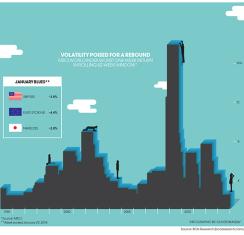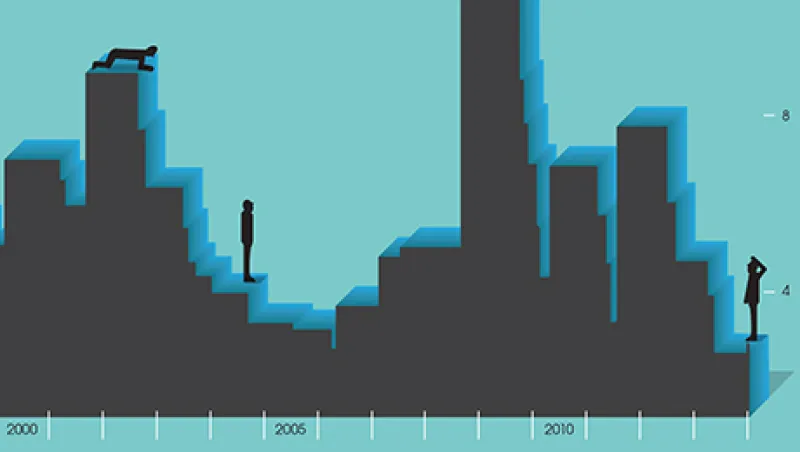Following the stunning returns generated by many of the world’s leading stock markets in 2013, some setback was almost inevitable. But the sharp declines suffered on Wall Street and elsewhere in January unnerved investors. Is the bull market at risk?
Welcome to the future of investing, which is starting to look more like the past. Last year was notable for its lack of volatility as well as its big rally. Before the late-January slide, the biggest weekly decline of the MSCI World Index over the previous 52 weeks was just 2 percent; the worst four-week loss was 5 percent. Those declines were the smallest for any rolling one-year period since 1996 and 2007, respectively. The Federal Reserve Board’s quantitative easing has boosted asset prices and depressed volatility. With the Fed now pulling back, the days of steady stock market gains may be over. That’s not necessarily a bad thing. The U.S. stock market hasn’t had a 10 percent correction since August 2011, leaving stocks vulnerable to a setback. And volatility is a two-way street: The S&P 500 index rebounded 2.3 percent in the week ended February 14, recouping much of those January losses.
Click image to enlarge.






